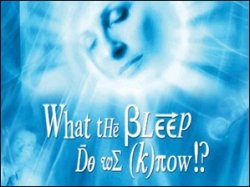Common characteristics of Theosophy
The use of the term theosophy has changed over time. As such, the use of the term in antiquity, or even using a strictly etymological definition, is not common in the academy. Theosophy actually designates a specific flow of thought, current, stream or tradition within the modern study of esotericism. Thus it follows the path starting from the more modern period of the 15th century onward (e.g. neo-Alexandrian, hermeticism, Christian Kaballah, Rosicrucianism, Alchemy etc.). The usage here is not intended to be inclusive of the concept as used in The Theosophical Society.
Theosophists engage in analysis of the universe, humanity, divinity, and the reciprocal effects of each on the other. The starting point for theosophists may be knowledge of external things in the world or inner experiences and the aim of the theosophist is to discover deeper meanings in the natural or divine realm. Antoine Faivre notes, "the theosophist dedicates his energy to inventing (in the word's original sense of 'discovering') the articulation of all things visible and invisible, by examining both divinity and nature in the smallest detail." The knowledge that is acquired through meditation is believed to change the being of the meditator.
Antoine Faivre successfully created a taxonomy approach as a means to comparing the various traditions. He proceeded by taking the concordance of neoplatonism, Hermeticism, Kaballah, astrology, alchemy, magic etc. and deduced six fundamental characteristics of esoteric spirituality. He discovered that the first four characteristics of esotericism are always present, while the latter two are sometimes present. Along with these six characteristics of esotericism, he identified three characteristics of theosophy.
Esotericism:
1. Correspondence: Everything in Nature is a sign. The signs of Nature can be read. The microcosm and macrocosm interplay. Synchronicity exists, and can be found as signs from Nature and may lead to the understanding of the divine.
2. Nature is Alive: It is not just correlations between pieces of matter. It is a living entity that will, and does, surge and evolve through its expanding self, replete with dynamic flows of energy and light.
3.
Imagination and mediations: Imaginations as a power that provides access to worlds and levels of reality intermediary between the material world and the divine.
4.
Experience of Transmutation: The Gnosis and illuminations of self and mind performing a transmutation of consciousness. The birth of an awareness, a second new life becomes born.
5. Practice of Concordance: Primordial Tradition. Studying traditions, religions etc. seeking the common one Root from which all esoteric knowledge grows.
6. Transmission: Master-Disciple, master-Initiate, initiation into the Occult.
The three characteristics of theosophy are listed below.
Theosophy:
1. Divine/Human/Nature Triangle: The inspired analysis which circles through these three angles. The intradivine within; the origin, death and placement of the human relating to Divinity and Nature; Nature as alive, the external, intellectual and material. All three complex correlations synthesize via the intellect and imaginative processes of Mind.
2. Primacy of the Mythic: The creative Imagination, an external world of symbols, glyphs, myths, synchronicities and the myriad, along with image, all as a universal reality for the interplay conjoined by creative mind.
3. Access to Supreme Worlds: The awakening within, inherently possessing the faculty to directly connect to the Divine world(s). The existence of a special human ability to create this connection. The ability to connect and explore all levels of reality; co-penetrate the human with the divine; to bond to all reality and experience a unique inner awakening.
 The Power of Thoughts
The Power of Thoughts
Discover the power that your Thoughts and Emotions have upon you. Learn how you can empower yourself to live in the moment by controlling your thoughts and emotions, and guiding yourself the way that you want to be guided, rather than allowing modern society to tell you how to feel and what to think.
Spirit Science - Thoughts
Spirit Science Video Series
 What The #$*!
What The #$*!
Do We Know?!
"What The Bleep Do We Know?!" is a radical departure from convention. It demands a freedom of view and greatness of thought so far unknown, indeed, not even dreamed of since Copernicus. It's a documentary. It's a story. It's mind-blowing special effects. This film plunges you into a world where quantum uncertainty is demonstrated - where neurological processes, and perceptual shifts are engaged and lived by its protagonist - where everything is alive, and reality is changed by every thought.
Thoughts Create Reality - Water Molecules
The Law of Attraction - Article by Steve Pavlina